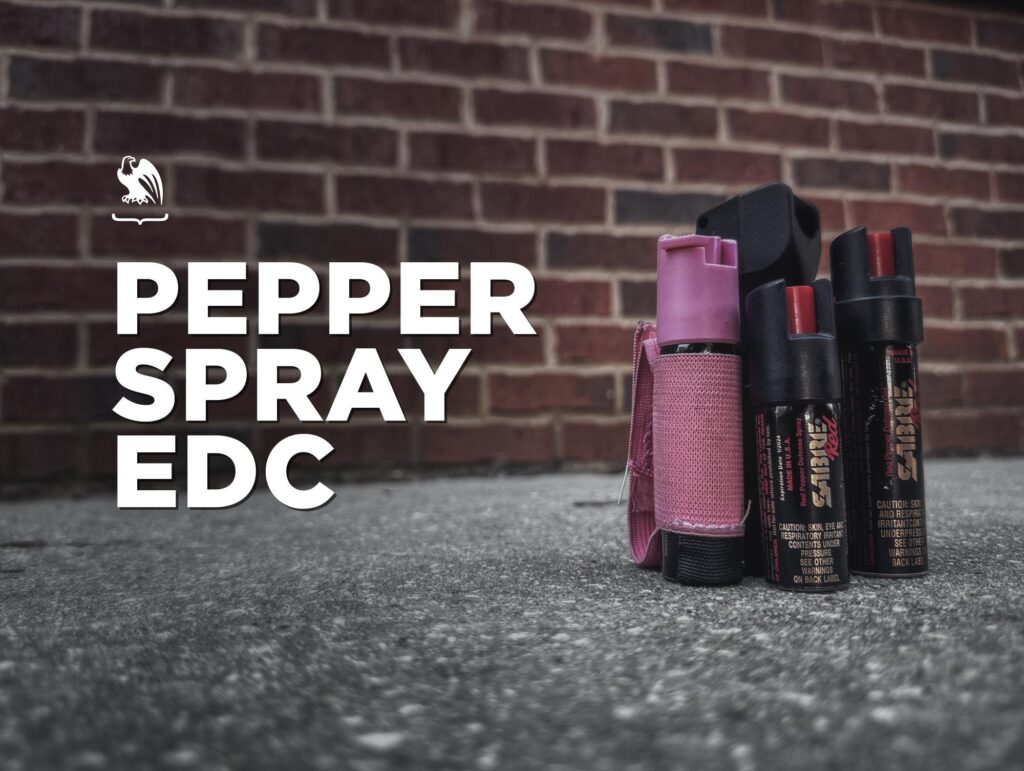Table of Contents
- Identifying Common Signs of Pepper Spray Malfunction
- Steps to Safely Test Your Pepper Spray Device
- Immediate Actions to Take if Your Pepper Spray Fails During Use
- When and How to Replace or Repair Your Pepper Spray Unit
- In Summary
Identifying Common Signs of Pepper Spray Malfunction
Knowing when your pepper spray is not functioning correctly is crucial for your safety. One of the most apparent indicators is a weak or inconsistent spray pattern. If the stream sputters, disperses too broadly, or fails to reach a proper distance, this can signal clogging within the nozzle or expired propellant. Additionally, a lack of the familiar sharp odor or a reduced burning sensation upon discharge could mean the formula has degraded, rendering it less effective. Physical damages such as dents in the canister or a broken safety mechanism are also key red flags that your device may not operate as intended during an emergency.
Here are some common symptoms to watch for that suggest your pepper spray might be compromised:
- Difficulty pressing the actuator button or no spray released at all.
- Visible damage or corrosion on the spray nozzle or canister surface.
- Unusual color changes or sediment inside the canister.
- Expired manufacture date or no clear expiration label.
- A burning or irritating smell emanating before use that is strongly unpleasant or chemical-like.
Steps to Safely Test Your Pepper Spray Device
Before putting your pepper spray to the test, it’s crucial to choose a safe and controlled environment. Opt for an outdoor space away from people, animals, and any sensitive areas. Avoid enclosed spaces to prevent accidental inhalation. To initiate the test, have a recommended testing target such as a piece of cardboard or a paper towel positioned a safe distance away. Remember: never test pepper spray indoors or near your face, as the aerosol can easily backfire and cause self-contamination.
When you’re ready, remove the safety lock gently and depress the nozzle for a short burst, aiming at the target. Keep track of the spray’s distance, pattern, and pressure – it should emit a consistent fog or stream without sputtering. If the stream is weak, irregular, or non-existent, your device may be compromised. After the test, be sure to secure the safety lock back in place. Clean your hands thoroughly and dispose of any used test materials responsibly to avoid unintended contact.
- Use proper protective gear, such as gloves and eye protection.
- Test only in well-ventilated outdoor settings.
- Keep a safe distance, around 6-10 feet from the target.
Immediate Actions to Take if Your Pepper Spray Fails During Use
When you realize your pepper spray isn’t deploying as expected, stay calm and immediately prioritize your personal safety. Quickly assess your surroundings to identify escape routes or nearby help. Avoid freezing in place-taking swift action is crucial. If possible, seek a safer location or move towards a crowded area where others can assist or act as a deterrent to the threat. Your mindset should shift from relying solely on the malfunctioning spray to using your environment and voice as defensive tools.
Next, employ alternative self-defense tactics while keeping your distance from the aggressor. Consider using loud, assertive verbal commands to draw attention and intimidate the attacker. If you carry other tools like a personal alarm or flashlight, deploy them immediately to disorient or repel the threat. Don’t hesitate to use physical barriers such as throwing objects or creating obstacles to slow down the attacker’s advance. In addition, once safe, check your pepper spray for any visible damage or blockage to prevent similar failures in the future.
When and How to Replace or Repair Your Pepper Spray Unit
Recognizing the right moment to either repair or replace your pepper spray unit is crucial for your personal safety. If you notice any signs such as a damaged or cracked casing, a clogged nozzle, or a weak spray discharge, these are clear indicators that your spray may not function properly when needed. Additionally, check the expiration date regularly-pepper spray can lose potency over time, sometimes faster if stored in extreme temperatures. When any of these issues appear, it’s best to err on the side of caution and consider replacement rather than risking ineffective self-defense.
In terms of action, never attempt to repair the spray canister yourself, as incorrect handling can lead to accidental discharge or damage. Instead, follow these guidelines:
- Perform a controlled test spray periodically, aiming away from people and pets, to ensure the stream is strong and the nozzle is clear.
- Replace the entire unit if the spray pattern appears weak, uneven, or inconsistent.
- Store your pepper spray in a cool, dry place to maintain effectiveness and extend shelf life.
- Dispose of expired or damaged units safely, adhering to local hazardous waste regulations.
When in doubt, prioritizing a new, reliable pepper spray unit is always the safest choice to ensure your protection.
In Summary
In today’s world, personal safety is paramount, and pepper spray can be an effective tool when used correctly. If you suspect your pepper spray is malfunctioning, it’s crucial not to take any chances-test it in a safe environment, check expiration dates, and replace it promptly if needed. Remember, having confidence in your self-defense gear means being prepared and proactive. Stay informed, stay safe, and never hesitate to seek professional guidance to ensure your peace of mind. Your safety is always worth the extra effort.Check Our Other Blogs
- StunGun – Your Trusted Source for Stun Guns, Laws, and Self-Defense Tips
- PepperSprayLaws – Your Trusted Resource for Pepper Spray Information
- StunGunLaws – Your Trusted Guide to Stun Gun Legality and Safety




